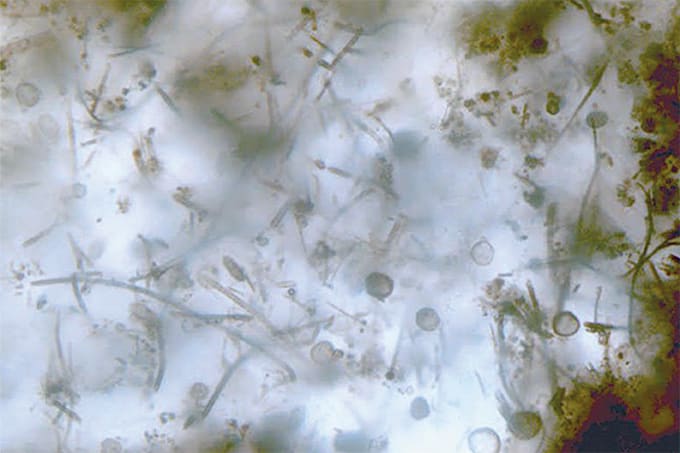Back in 2013, an article entitled “Every Dog Has Its Day” in The Analytical Scientist suggested that the canine could be replaced by emerging technologies. “A new ‘sniff’ test for explosives uses direct, real-time vapor detection in a bid to put our canine colleagues out of work in the screening of people, baggage and cargo,” it boldly stated (tas.txp.to/0115/dogdays). The article focused on using ionization chemistry at the front end of a mass spectrometer that could measure in parts per quadrillion. Our research project takes a rather different approach... Instead of comparing and contrasting dogs with the latest technology, we found it beneficial to associate and align the capabilities of the canine with the field application of gas chromatography-mass spectrometry (GC-MS) teamed with solid phase microextraction (SPME). Why? We were aiming to increase scientific capability in a very special application area: arson investigations. At fire scenes, investigators look for traces of flammable liquids using electronic sniffers or specially trained canines. Debris is collected and must be examined by a properly certified forensic lab – a process that can take weeks.
Our Phase I testing involved bench-scale fires, which demonstrated the ability of GC-MS to identify 13 different ignitable liquids. A sensitive volatile organic vapor detector utilizing photo ionization technology (PID) was used to locate the highest concentration of vapors, which were then sampled using an exposed SPME fiber, followed immediately by hand-portable GC-MS. The initial testing provided significant improvements in sampling techniques including a method proposed by Dr. DeHaan that increased vapor concentrations while reducing cross contamination. Phase II testing – with full-scale room fires and extended post-flashover exposures – confirmed that the identification of ignitable liquid vapors from fire debris was possible, with reported vapor concentrations as low as 5000 parts per billion. Phase III tests have been designed to evaluate our method in actual fire scenes in Texas and California, putting science behind the canine. And although the testing will not be concluded until 2015, the results have already demonstrated the system’s capability to identify ignitable liquid vapors at the fire scene when located by trained canine teams.
And so back to the canine... “The sensitivity of canines is unknown... This work represents the first direct vapor detection of explosives so it should be comparable to the canine response,” said Robert Ewing, a senior research scientist at the Pacific Northwest National Laboratory in the aforementioned article. And the canine olfactory system certainly sets a high standard – it is estimated to be in the order of a few ppb for many compounds. Some of our significant research findings link GC-MS data to the work of fire/arson canines. During a canine certification test in Texas, 10 microliters of gasoline was placed onto carpet in an open-air room, about 10-meters square. Eleven of the twelve canines were able to pinpoint the source, ranging from 7 cm to within 0.7 cm of the target. Instrument readings revealed canine hits below the detection limits of the PID detector. By utilizing a 15-minute SPME sampling time with the DeHaan sampling methodology, GC-MS data identified the components of gasoline. While the sensitivity of the canine olfactory system is remarkable, the canine alert obviously cannot discriminate volatile fuels present; critical identification of possible accelerants from the residues of products used as solvents in adhesives, insecticides, fabric cleaners, or those that are inherent to the consumer product or its raw materials, can only be made by with GC-MS analysis.
What have we learned during our research project? Well, we’ve found that it is much more advantageous to collaborate with the canine rather than try to compete with it! By combining traditional and new approaches, we can provide the decision maker with additional timely information. Our airports are in desperate need of improved detection of explosives. The predominant technology being used today – ion mobilization spectroscopy (IMS) calibrated to look for nitrogen based explosives – is much maligned. The use of ionization with mass spectrometry is a significant improvement, but it may never be evaluated. Combining canines with advanced instrumentation may be a better idea than arguing for their replacement. Dogs are faster and more flexible than any instrument-based technology alone.
References
- J. D. DeHaan, G. S. Dobson, and D. A. Matthew, “On-scene Characterization of Flammable Liquid Vapors Using GC/MS and SPME Sampling” International Fire Service Investigation Science & Technology (University of Maryland, Aldelphi, MD, 7th edition, 2014).




